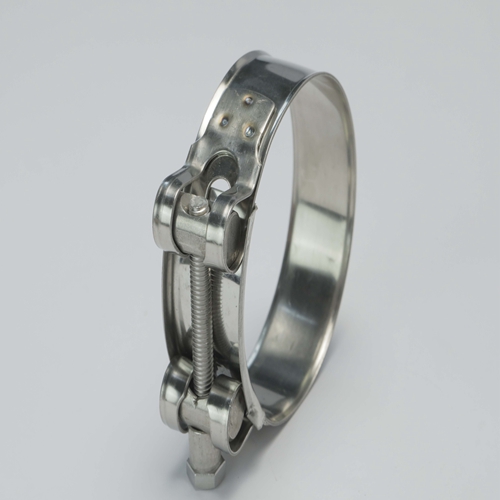- Phone:+86-17331948172 +86-0319-8862898
- E-mail: inquiry@puxingclamp.com
Dec . 26, 2024 15:47 Back to list
3/4 hose clamp
Understanding 3/4 Hose Clamps Importance and Applications
Hose clamps, also known as hose clips, are essential components in various applications, ranging from automotive to plumbing and industrial uses. Among the many types available, the 3/4 hose clamp is particularly versatile and widely utilized. This article will explore what a 3/4 hose clamp is, its construction, applications, and tips for selection and installation.
What Is a 3/4 Hose Clamp?
A 3/4 hose clamp is a fastening device designed to hold a hose securely onto a fitting, preventing leaks and ensuring optimal performance. The 3/4 measurement refers to the diameter of the hose that the clamp is designed to accommodate. These clamps are typically made from materials such as stainless steel or zinc-plated steel to offer corrosion resistance and durability in various environments.
Types of Hose Clamps
Hose clamps come in various configurations, with the most common types being
1. Screw-type Clamps These utilize a screw mechanism to tighten or loosen the clamp around the hose. They are easy to adjust and provide a secure fit, making them a popular choice for a wide range of applications.
2. Spring Clamps These clamps use a spring mechanism for tension, ensuring a consistent hold without requiring adjustments. They are often used in applications that demand flexibility and ease of assembly.
3. T-Bolt Clamps Designed for high-pressure situations, T-bolt clamps are robust and can secure hoses effectively, especially in performance and heavy-duty applications.
4. Worm Gear Clamps Similar to screw-type clamps, these feature a worm gear that allows for precise adjustments. They are ideal for securing hoses that experience vibration.
Applications of 3/4 Hose Clamps
The uses of 3/4 hose clamps are extensive. In automotive applications, they are commonly found in coolant and fuel lines to maintain a secure connection under various temperatures and pressure levels. In plumbing, they are used to fasten hoses to faucets, drains, and other fixtures, ensuring a tight seal that prevents leaks.
3/4 hose clamp

In industrial settings, 3/4 hose clamps are utilized in the connection of air and fluid transfer hoses in machinery, as well as in agricultural equipment for securing irrigation hoses. Their versatility extends to residential uses, where they can be found in garden hoses, washing machines, and other household appliances.
Choosing the Right Hose Clamp
When selecting a 3/4 hose clamp, several factors must be considered to ensure the best fit and functionality
1. Material Choose a clamp made from a material that suits your application. Stainless steel is ideal for high-corrosion environments, while zinc-plated steel may suffice for standard applications.
2. Diameter Range Ensure the clamp can accommodate the specific diameter of the hose being used, as a proper fit is critical for preventing leaks.
3. Type of Clamp Based on your requirements, decide which type of clamp best suits your needs. For example, if you anticipate frequent adjustments, a screw-type clamp may be your best option.
4. Load and Pressure Ratings Evaluate the load and pressure that the clamp must withstand. T-bolt clamps are better for high-pressure scenarios, while standard screw-type clamps may be sufficient for lower-pressure applications.
Installation Tips
Proper installation is crucial for the effectiveness of a hose clamp. Here are some tips
- Clean the Surface Ensure the hose and fitting surfaces are clean and free of debris for a better seal. - Positioning Position the clamp near the fitting's edge but avoid placing it directly on the fitting to prevent damage. - Tightening Tighten the clamp uniformly, applying even pressure to secure the hose without risking damage.
In conclusion, the 3/4 hose clamp is a vital tool in a plethora of applications, thanks to its reliability and versatility. By understanding its types, choosing appropriately, and following installation best practices, users can ensure optimal performance in various systems.
-
High Quality T Bolt Hose Clip Factory & Suppliers Durable Stainless Steel Hose Clamps for Industrial Use
NewsJul.08,2025
-
High-Quality Hose Clamp & T Clamp Hose Clamp Reliable Factory & Suppliers
NewsJul.08,2025
-
Cold Rolled Stainless Steel Band - Premium Quality Supplier & Factory Price
NewsJul.08,2025
-
High-Quality Steel Strip from China Stainless Steel Coil & Cold Rolled Carbon Strip Manufacturer & Supplier
NewsJul.07,2025
-
High-Quality T Bolt Hose Clip from Leading Factory & Suppliers Reliable t bolt hose clip Factories
NewsJul.07,2025
-
Mini Hose Clamp Manufacturer & Supplier Precision Hose Clamps Mini Clamp Factory
NewsJul.07,2025




